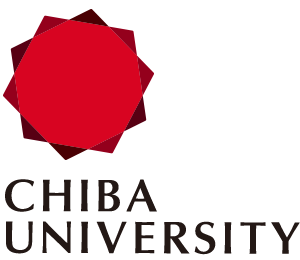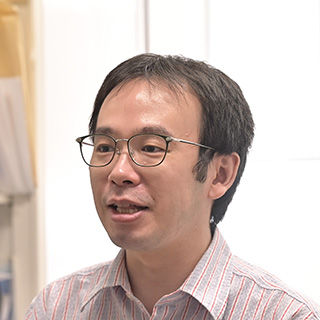Study reveals how plants balance starch and oil production in leaves, opening new possibilities for sustainable biofuel production and oil-rich carbon resources
Starch and oils are known as storehouses of carbon in plants. However, the way in which carbon resources are allocated during metabolism in plants remained unknown. Now, however, using a forward genetics approach, researchers have identified that a gene named LIRI1 regulates this process, significantly increasing oil storage in leaves while reducing starch levels. Their findings provide insights into carbon allocation mechanisms, offering the potential for the development of renewable biofuel resources or low-starch foods.

Image title: Unravelling the mechanisms of carbon resource allocation in plant leaves
Image caption: Using a forward genetics approach, researchers identified the LIRI1 gene to be the key regulator of carbon allocation in plant leaves, balancing starch and triacylglycerol (TAG) storage. LIRI1 interacts with ACETYL-COENZYME A CARBOXYLASE CARBOXYLTRANSFERASE ALPHA SUBUNIT (α-CT), which is essential for fatty acid biosynthesis and TAGs production, and STARCH SYNTHASE 4 (SS4), which is involved in starch biosynthesis.
Image credit: Associate Professor Takashi L. Shimada from Chiba University, Japan
Image license: Original content
Usage restrictions: Cannot be reused without permission.
Plants store carbon in two primary forms: starch and triacylglycerols (TAGs). Starch is mainly stored in chloroplasts in leaves, where it serves as a readily available energy source, while TAGs are stored in seeds for long-term energy storage. Past studies have shown that a carbon trade-off exists between these two storage forms, implying that an increase in the levels of one form often reduces the levels of the other. Interestingly, attempts to increase TAG in leaves have led to a decrease in the levels of starch, suggesting that plants regulate carbon sources, prioritizing either starch or TAGs. Understanding this trade-off could lead to the development of plants with more TAG in their leaves, providing a sustainable source of plant oils.
Now, in a study published in the Journal of Experimental Botany on February 8, 2025, researchers from Chiba University, Japan, provide new insights into the factors controlling this carbon trade-off. Their findings reveal that a previously unreported gene –named LIRI1 –which encodes an unknown protein, plays a crucial role in regulating the balance between starch and lipid storage in plant leaves by influencing both fatty acid and starch biosynthesis pathways.
Led by Associate Professor Takashi L. Shimada, with Ms. Mebae Yamaguchi as the study’s first author, from the Graduate School of Horticulture, Chiba University, the research team used a forward genetics approach to identify the genes responsible for altered carbon storage patterns. They screened mutant Arabidopsis plants that exhibited higher leaf TAG levels and lower starch content, eventually identifying LIRI1 as a key regulator.
Talking about the rationale behind this study, Associate Professor Shimada says, “We were interested in how plants allocate carbon resources. Particularly, why do seeds accumulate so many lipids while leaves contain very little? Answering this question through our research has helped us contribute to both basic and applied science.”
Instead of directly measuring the TAG content in leaves, which would be time-consuming, the researchers counted the number of lipid droplets (LDs) that store TAG in the leaves. To develop the mutants, the researchers treated Arabidopsis seeds with ethyl methanesulfonate, a chemical mutagen that induces random DNA mutations. The seeds carried a transgene encoding green fluorescent protein fused to CALEOSIN3, a protein that naturally localizes to LDs. This fluorescent tagging allowed the researchers to visualize LDs in the leaves of the seedlings under a fluorescence microscope. Among the screened plants, they discovered a mutant named lipid-rich 1-1 (liri1-1), which had five times more TAGs and half the starch content of wild-type plants.
The overaccumulation of LDs in liri1 mutants was found to be due to the loss of function of the LIRI1 gene in chloroplasts. The gene interacts with two key enzymes: ACETYL-COENZYME A CARBOXYLASE CARBOXYLTRANSFERASE ALPHA SUBUNIT (α-CT), which is essential for fatty acid biosynthesis, and STARCH SYNTHASE 4 (SS4), which is involved in starch biosynthesis.
Based on the observations, the researchers propose that in wild-type plants, LIRI1 promotes carbon allocation by activating starch production, inhibiting starch degradation, or encouraging carbon allocation to starch at the expense of TAG. However, when LIRI1 is defective, these mechanisms are disrupted, shifting carbon allocation toward TAG production instead of starch. The mutant liri1 plants were found to have growth defects and irregular chloroplasts, suggesting that proper carbon allocation between TAGs and starch plays a role in normal plant development.
These findings highlight the role of LIRI1 as a key regulator of starch-lipid balance in plants. Even as the demand for plant oil as a biofuel and food source increases worldwide, modifying LIRI1 could enable the development of crops with higher TAG storage in leaves, providing a renewable source for fulfilling this demand.
“The liri1 mutation could be useful for developing novel high-TAG crops or low-starch crops,” says Associate Professor Shimada, while commenting on the real-life implications of these findings. Adding further, he says, “Such crops could eventually be tailored for human health, for example, as low-starch food options for people with diabetes.”
About Associate Professor Takashi L. Shimada
Dr. Takashi L. Shimada is an Associate Professor at the Graduate School of Horticulture, Plant Molecular Science Center, and Research Center for Space Agriculture and Horticulture at Chiba University, Japan. Dr. Shimada investigates the intracellular structure of plants, especially lipid droplets. His research aims to comprehensively understand lipid storage in plants and enhance plant lipid production for potential application as a food resource. He has co-authored more than 20 reputed publications and is a member of multiple academic societies, including the Japanese Association of Plant Lipid Researchers and The Phytopathological Society of Japan.
Funding:
This work was supported by Grants-in-Aid for Scientific Research to TLS (no. 19K05809), MaY (nos 22H05124 and 19H05652), HU (nos 19K06732 and 18H05496), and IH-N (no. 15H05776) from the Japan Society for the Promotion of Science (JSPS); the Kato Memorial Bioscience Foundation (TLS); a SUNBOR GRANT from the Suntory Foundation for Life Sciences to TLS; the Takeda Science Foundation (TLS); a research grant from the Yanmar Environmental Sustainability Support Association to TLS; the Inamori Foundation (TLS); the JGC-S Scholarship Foundation (TLS); the Leading Initiative for Excellent Young Researchers (LEADER) (no. J16HJ00026 to TLS) from the Ministry of Education, Culture, Sports, Science and Technology in Japan (MEXT); the NIBB Collaborative Research Program (17-301, 17-453, 18-301, 18-412, 19-302 to TLS); the Phytochemical Plant Molecular Science of Strategic Priority Research Promotion Program (TLS and KS) from Chiba University; Precursory Research for Embryonic Science and Technology (PRESTO) (RS) from the Japan Science and Technology Agency (JST); and the Hirao Taro Foundation of KONAN GAKUEN for Academic Research (HU and IH-N).
Reference:
Title of original paper: LIPID RICH 1 modulates allocation of carbon between starch
and triacylglycerol in Arabidopsis leaves
Authors: Mebae Yamaguchi1, Shuji Shigenobu2, Katsushi Yamaguchi2, Yasuhiro Higashi3, Yozo Okazaki3,4, Kazuki Saito3,5, Emi Mishiro-Sato6, Keiko Kano6, Ryosuke Sugiyama5,7, Mami Yamazaki5,7, Shigeo S. Sugano8, Shuichi Fukuyoshi9, Haruko Ueda10, Ikuko Hara-Nishimura10, and Takashi L. Shimada1,5,11
Affiliations:
1Graduate School of Horticulture, Chiba University, Japan
2Trans-Scale Biology Center, National Institute for Basic Biology, Japan
3RIKEN Center for Sustainable Resource Science, Japan
4Graduate School of Bioresources, Mie University, Japan
5Plant Molecular Science Center, Chiba University, Japan
6Institute of Transformative Bio-Molecules (WPI-ITbM), Nagoya University, Japan
7Laboratory of Molecular Biology and Biotechnology, Graduate School of Pharmaceutical Sciences, Chiba University, Japan
8Bioproduction Research Institute, National Institute of Advanced Industrial Science and Technology (AIST), Japan
9Institute of Medical, Pharmaceutical and Health Sciences, Kanazawa University, Japan
10Faculty of Science and Engineering, Konan University, Japan
11Research Center for Space Agriculture and Horticulture, Chiba University, Japan
Journal: Journal of Experimental Botany
DOI: 10.1093/jxb/eraf048
Contact: Takashi L. Shimada
Graduate School of Horticulture/Plant Molecular Science Center/Research Center for Space Agriculture and Horticulture, Chiba University
Email: tlshimada@chiba-u.jp
Public Relations Office, Chiba University
Address: 1-33 Yayoi, Inage, Chiba 263-8522 JAPAN
Email: koho-press@chiba-u.jp
Tel: +81-43-290-2018





